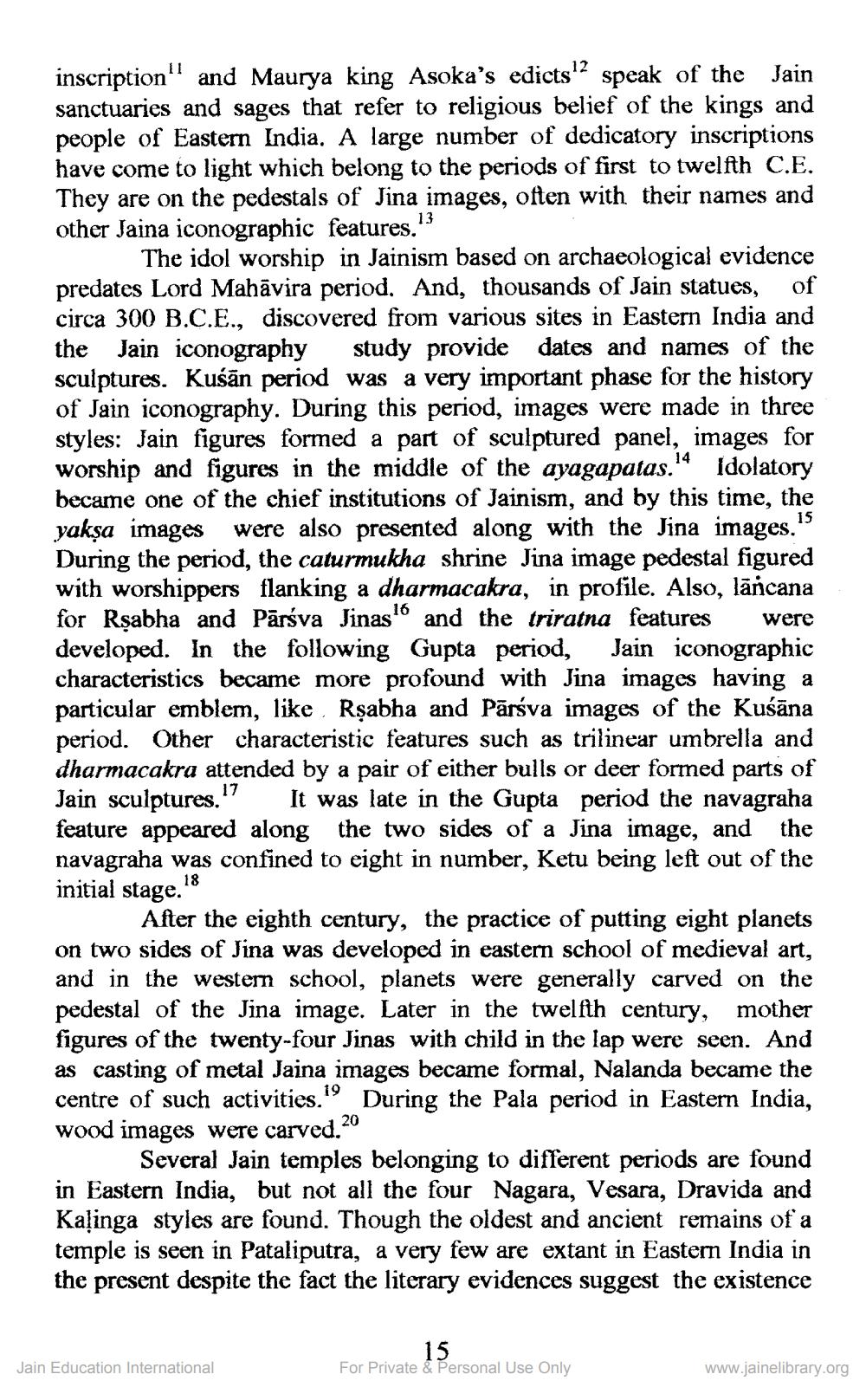________________
inscription" and Maurya king Asoka's edicts"speak of the Jain sanctuaries and sages that refer to religious belief of the kings and people of Eastern India. A large number of dedicatory inscriptions have come to light which belong to the periods of first to twelfth C.E. They are on the pedestals of Jina images, often with their names and other Jaina iconographic features."
The idol worship in Jainism based on archaeological evidence predates Lord Mahāvira period. And, thousands of Jain statues, of circa 300 B.C.E., discovered from various sites in Eastern India and the Jain iconography study provide dates and names of the sculptures. Kuśān period was a very important phase for the history of Jain iconography. During this period, images were made in three styles: Jain figures formed a part of sculptured panel, images for worship and figures in the middle of the ayagapatas. Idolatory became one of the chief institutions of Jainism, and by this time, the yakṣa images were also presented along with the Jina images.is During the period, the caturmukha shrine Jina image pedestal figured with worshippers flanking a dharmacakra, in profile. Also, lāncana for Rşabha and Pārsva Jinas and the triratna features were developed. In the following Gupta period, Jain iconographic characteristics became more profound with Jina images having a particular emblem, like Rşabha and Pārsva images of the Kuśāna period. Other characteristic features such as trilinear umbrella and dharmacakra attended by a pair of either bulls or deer formed parts of Jain sculptures." It was late in the Gupta period the navagraha feature appeared along the two sides of a Jina image, and the navagraha was confined to eight in number, Ketu being left out of the initial stage.
After the eighth century, the practice of putting eight planets on two sides of Jina was developed in eastern school of medieval art, and in the western school, planets were generally carved on the pedestal of the Jina image. Later in the twelfth century, mother figures of the twenty-four Jinas with child in the lap were seen. And as casting of metal Jaina images became formal, Nalanda became the centre of such activities." During the Pala period in Eastern India, wood images were carved.
Several Jain temples belonging to different periods are found in Eastern India, but not all the four Nagara, Vesara, Dravida and Kaļinga styles are found. Though the oldest and ancient remains of a temple is seen in Pataliputra, a very few are extant in Eastern India in the present despite the fact the literary evidences suggest the existence
Jain Education International
15 For Private & Personal Use Only
www.jainelibrary.org




